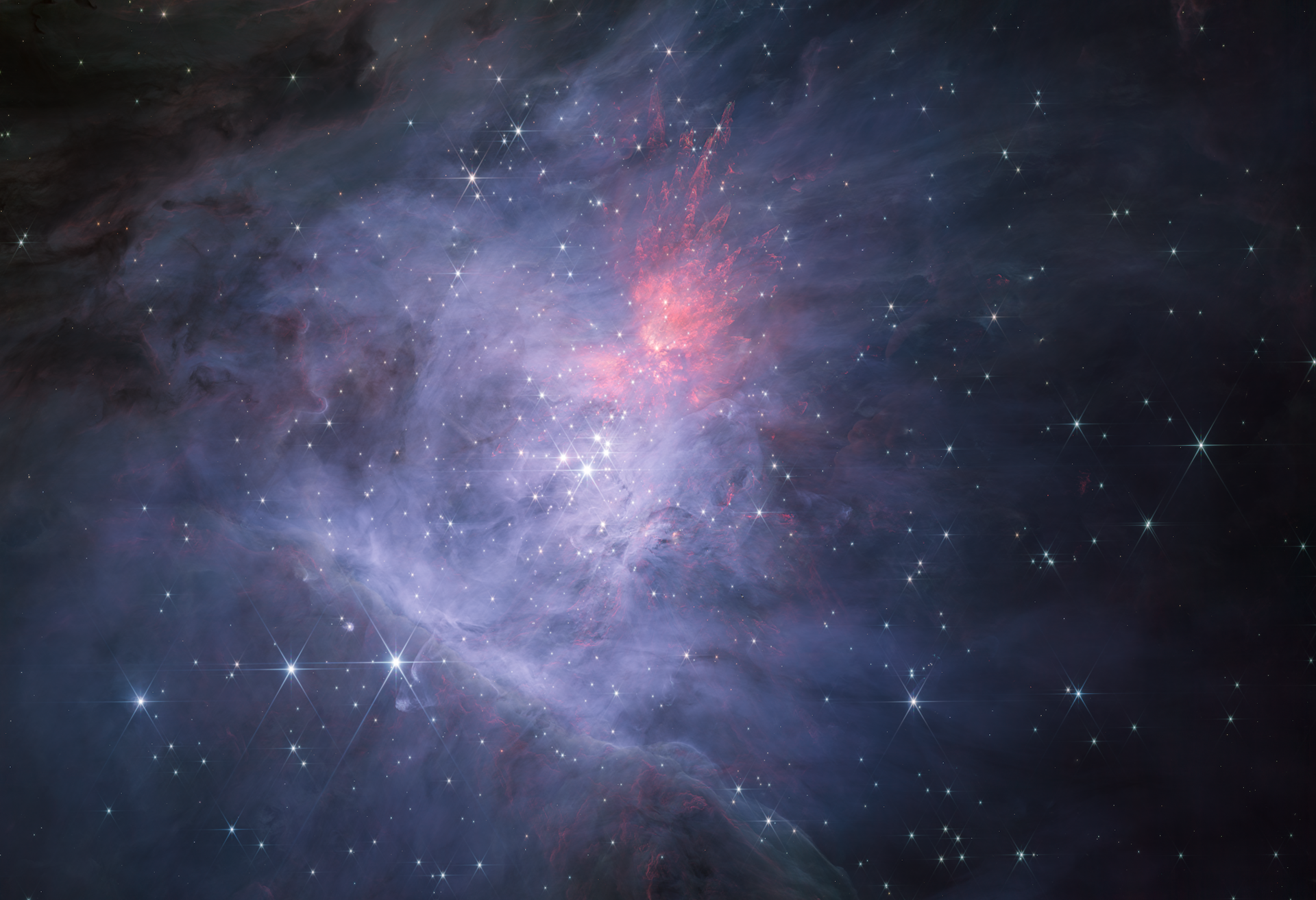Accept all cookies Accept only essential cookies See our Cookie Notice

About ESA
The European Space Agency (ESA) is Europe’s gateway to space. Its mission is to shape the development of Europe’s space capability and ensure that investment in space continues to deliver benefits to the citizens of Europe and the world.
Highlights
ESA - United space in Europe
This is ESA ESA facts Member States & Cooperating States Funding Director General Top management For Member State Delegations European vision European Space Policy ESA & EU Space Councils Responsibility & Sustainability Annual Report Calendar of meetings Corporate newsEstablishments & sites
ESA Headquarters ESA ESTEC ESA ESOC ESA ESRIN ESA EAC ESA ESAC Europe's Spaceport ESA ESEC ESA ECSAT Brussels Office Washington OfficeWorking with ESA
Business with ESA ESA Commercialisation Gateway Law at ESA Careers Cyber resilience at ESA IT at ESA Newsroom Partnerships Merchandising Licence Education Open Space Innovation Platform Integrity and Reporting Administrative Tribunal Health and SafetyMore about ESA
History ESA Historical Archives Exhibitions Publications Art & Culture ESA Merchandise Kids Diversity ESA Brand Centre ESA ChampionsLatest
Space in Member States
Find out more about space activities in our 23 Member States, and understand how ESA works together with their national agencies, institutions and organisations.
Science & Exploration
Exploring our Solar System and unlocking the secrets of the Universe
Go to topicAstronauts
Missions
Juice Euclid Webb Solar Orbiter BepiColombo Gaia ExoMars Cheops Exoplanet missions More missionsActivities
International Space Station Orion service module Gateway Concordia Caves & Pangaea BenefitsLatest
Space Safety
Protecting life and infrastructure on Earth and in orbit
Go to topicAsteroids
Asteroids and Planetary Defence Asteroid danger explained Flyeye telescope: asteroid detection Hera mission: asteroid deflection Near-Earth Object Coordination CentreSpace junk
About space debris Space debris by the numbers Space Environment Report In space refuelling, refurbishing and removingSafety from space
Clean Space ecodesign Zero Debris Technologies Space for Earth Supporting Sustainable DevelopmentApplications
Using space to benefit citizens and meet future challenges on Earth
Go to topicObserving the Earth
Observing the Earth Future EO Copernicus Meteorology Space for our climate Satellite missionsCommercialisation
ESA Commercialisation Gateway Open Space Innovation Platform Business Incubation ESA Space SolutionsEnabling & Support
Making space accessible and developing the technologies for the future
Go to topicBuilding missions
Space Engineering and Technology Test centre Laboratories Concurrent Design Facility Preparing for the future Shaping the Future Discovery and Preparation Advanced Concepts TeamSpace transportation
Space Transportation Ariane Vega Space Rider Future space transportation Boost! Europe's Spaceport Launches from Europe's Spaceport from 2012Latest

Orion Nebula in NIRCam short-wavelength channel
Thank you for liking
You have already liked this page, you can only like it once!
This image shows the full survey of the inner Orion Nebula and Trapezium Cluster made using the NIRCam instrument on the NASA/ESA/CSA James Webb Space Telescope. This is the short-wavelength colour composite, which reveals the nebula, its stars, and many other objects in unprecedented detail in the infrared.
This young star-forming region is just a million years old and contains thousands of new stars spanning a range of masses from 40 down to less than 0.1 times the mass of the Sun. The region also contains many brown dwarfs, objects below seven percent of the mass of the Sun which are too small to start nuclear fusion in their cores. And below that, starting at roughly 13 times the mass of Jupiter, lie the planetary-mass objects. These new Webb data have revealed hundreds of such objects, floating freely in the nebula, not orbiting stars, the very smallest of which have just 60% the mass of Jupiter or two times the mass of Saturn.
The Orion Nebula lies roughly 1300 light-years from Earth in the so-called 'sword' of the constellation of Orion the Hunter, and the image shows a region that is 4 by 2.75-light years in size, smaller than the distance between Earth and our nearest stellar neighbour, Proxima Centauri.
Image description: An image of a young star-forming region filled with wispy blue, grey, green, and red nebulosity that is brightest towards the centre and fainter towards the edges, especially in the top left corner and on the right side. Thousands of stars are seen sprinkled across the field, concentrated towards the centre, and the brightest stars show the eight spikes due to diffraction that are characteristic of Webb images.
-
CREDIT
NASA, ESA, CSA / Science leads and image processing: M. McCaughrean, S. Pearson -
LICENCE
CC BY-SA 3.0 IGO or ESA Standard Licence
(content can be used under either licence)

Orion Nebula in NIRCam short-wavelength channel aligned

Slider: Orion Nebula in NIRCam short- versus long-wa…

Short-wavelength NIRCam Orion mosaic in ESASky

Orion Nebula in NIRCam long-wavelength channel















 Germany
Germany
 Austria
Austria
 Belgium
Belgium
 Denmark
Denmark
 Spain
Spain
 Estonia
Estonia
 Finland
Finland
 France
France
 Greece
Greece
 Hungary
Hungary
 Ireland
Ireland
 Italy
Italy
 Luxembourg
Luxembourg
 Norway
Norway
 The Netherlands
The Netherlands
 Poland
Poland
 Portugal
Portugal
 Czechia
Czechia
 Romania
Romania
 United Kingdom
United Kingdom
 Slovenia
Slovenia
 Sweden
Sweden
 Switzerland
Switzerland

























